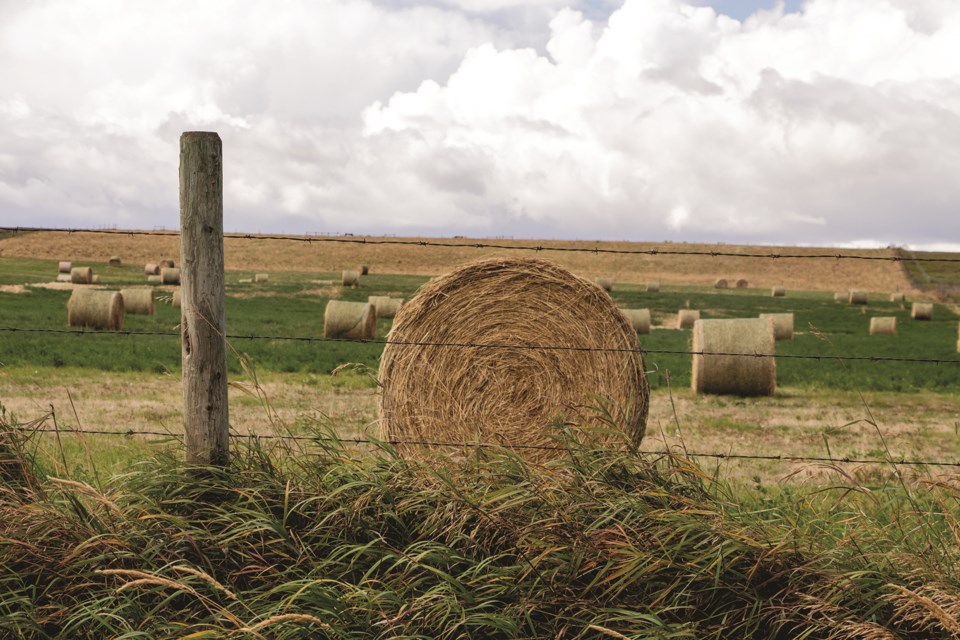Rocky View County (RVC) is not quite ready yet to declare an agricultural disaster for 2023, but it still might come, according to Jeff Fleischer, RVC acting manager of agricultural and environmental services.
“We are teetering on that agricultural disaster stage,” he confirmed. “Right now, about 23 per cent of our total agriculture is at that disaster stage, and we have got about 40 per cent that is kind of just one step away.”
To the south of Rocky View County, Foothills County declared an agricultural disaster in late June, citing severely depleted moisture levels and the extreme heat conditions experienced earlier this spring.
RVC put out its first crop report of the summer last week, and Fleischer said it shows basically a tale of two counties on the agricultural front.
Annual crops seem to be holding out all right thanks to some timely moisture in recent months, but he explained pastures are thin on grass and hay crops are a complete write-off.
“Right now, the annual crops are kind of the thing where these showers have been helping them out,” Fleischer said. “They are kind of pulling through a little bit better than the hay crops, for sure… In some areas, those annual crops are actually fair to good.”
But worsening matters was the extreme heat the region experienced in May and early June, which Fleischer said “really cooked the hay and pastures."
“That’s what really put us in that situation we are in now. We have (since) been getting rain and getting moisture, but the damage is done.”
According to Fleischer, it is the ongoing resilience of annual crops such as wheat, barley, and canola so far this year in most areas of the county that has held RVC back from declaring an agricultural disaster.
“When declaring a disaster, we do kind of have to compare the whole story,” he explained. “The annual crops, and the hay, and the pastures. When you declare an agricultural disaster, it is a disaster across agriculture in general. We are monitoring all forms of agriculture.”
While Fleischer dates the disaster among local hay crops back to the atypically hot month of May, Ralph Wright of the Government of Alberta’s Alberta Agro Climate Information Centre (which monitors precipitation all across the province) said the story goes back much further than that to last fall.
“Last July, you (in RVC and area) were pretty much near normal,” he explained. “Well, August rolled around and August was below normal. September was very dry. That is an important month for pastures – going into September, October for soil moisture. We can say for a lot of the pastures (in Rocky View County), the problem started (last) August.”
Wright said the cold and dry winter and late spring that followed did add some new moisture to the soil, but not enough to offset the highest daily average temperatures seen in May going back as far as 1961.
According to Wright, the average daily temperature in May for Rocky View County and the Airdrie area was 14 C in 2023. This made it the hottest May recorded since climate information in Alberta began to be kept in electronic form in 1961. The previous high in that month was recorded in 1981, when the average daily temperature was 9.3 C.
This combined with lower than average moisture of 31 millimetres (the average is 57) for the month. Wright said the thin state of the soil moisture reserves stemming back to fall of 2022 led Rocky View County and Airdrie area to where they are today: with local pastures not thriving and hay crops pretty much wrecked.
“We talk about near normal rainfall or slightly below normal rainfall – well, soil is really the rainfall bank account,” Wright explained. “It can make up for deficits when you are below normal … This year, there just wasn’t a lot of soil moisture kicking around. So the plants were very reliant on rainfall, and regularly timed rainfall, and they just couldn’t get it (when it mattered).”
As for the annual crops, Wright said timely but sporadic moisture from thunderstorms has been the difference-maker for those plants. However, it also means the moisture situation has been patchwork across the whole of the region.
“Half of Rocky View County (in the past 60 days) was on the low side of normal, but what we call near normal,” he said. “And the other half, some of it was grading into about one in six to 10 year lows for that 60-day period. In the southeast corner of Rocky View, you got about 100 millimetres, and that graded up to about 175 millimetres in the northwest corner.”
As for what may be coming in August, Wright said he doesn’t have a clue. According to Wright, Rocky View residents will just have to take the weather conditions as they come.
“Wet spells and dry spells begin and end abruptly,” he stated. “I have a saying: ‘The weather of last week, last month, last year is not a good predictor of the weather next week, next month, next year.’”



